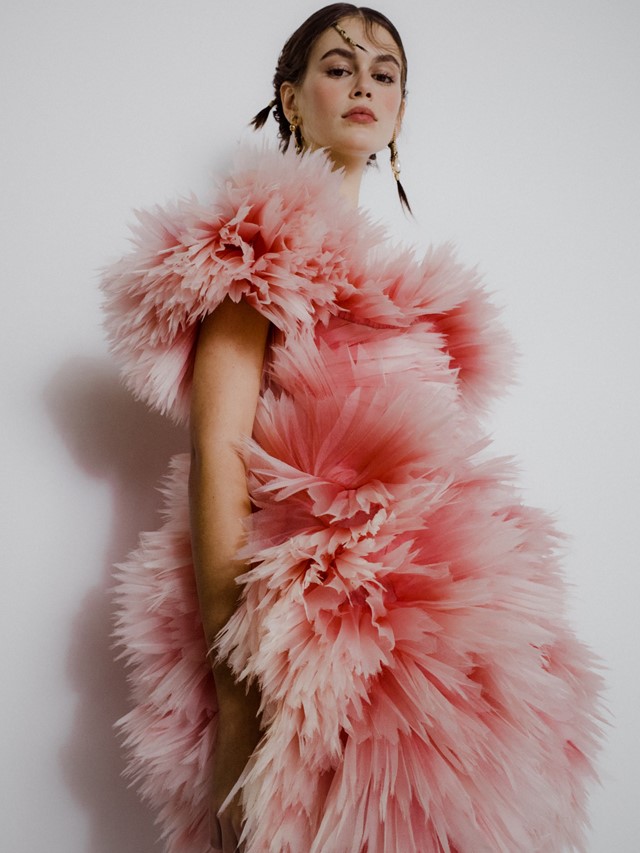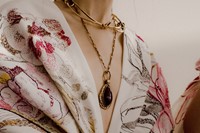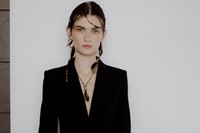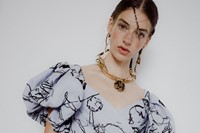A “pared-back” collection from Sarah Burton nonetheless proved an extraordinary demonstration of beauty and craftsmanship
Mid-way through Alexander McQueen’s Spring/Summer 2020 show, held in Paris yesterday evening, walked the British model Stella Tennant. She wore an ivory gown: on it, scrawled by hand, a teeming mass of human figures. The show notes elaborated – the “dancing girls” had been sketched by Central Saint Martins MA students during a life drawing class, held at the educational space at Alexander McQueen’s recently opened store in London earlier this year.
From afar, those figures appear to be drawn directly onto the fabric – with marker pen, or paint – but look closer and each line, mark and smudge had been stitched by hand by the McQueen atelier (every person on the team contributed, inspired by the work of The Stitch School which was founded to reconnect boys and girls to the art of embroidery). It seemed to encapsulate Burton’s work in recent seasons at McQueen: her near-inimitable ability to take extraordinary technique – comparable only to the most venerable of Parisian couture houses – and meld it with the homespun, the hand-touched, the human.
“Each look tells its own story,” Burton said of the collection. “The connection between the clothes is the time it took to make them. I am interested in clarity and paring things down, in the essence of garments – stripping back the the toile.” And the toile – the ghostly first iteration of a garment, usually cut from inexpensive calico – is where this season began: a puff-sleeved dress, based on a dress from McQueen’s A/W00 Eshu collection, originally made in calico, was the collection’s first look. Here, it was re-made in “beetled moonlit ivory linen”, based on an ancient technique where fabric would be left in the field to be bleached by the sun and the moon.
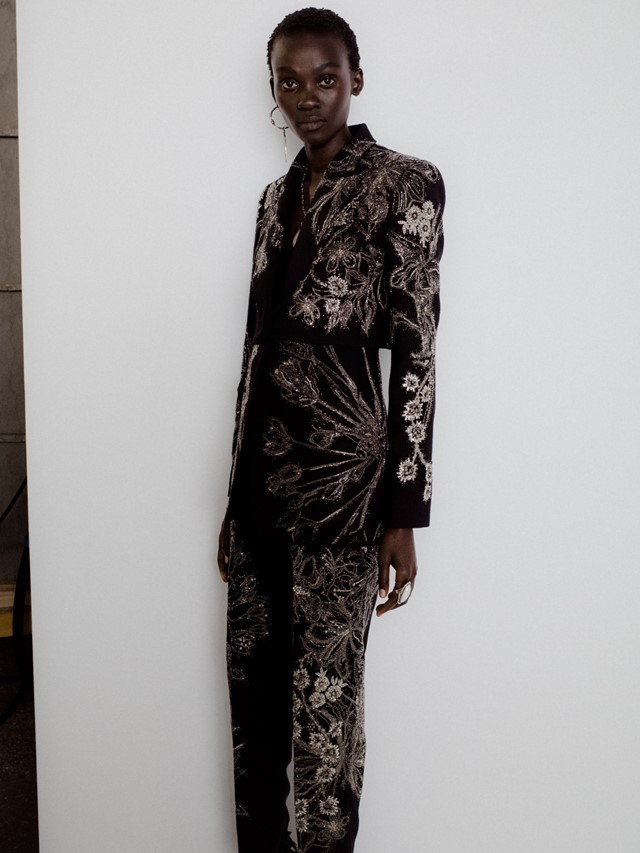
Such techniques were discovered on a trip Burton and her design team made to Northern Ireland, where they researched the provenance of Irish linen – and discovered a 300-year-old factory which still practiced the ‘beetling’ technique, which involved hours treating linen with potato starch to achieve a smooth, almost glossy, finish. This resurrection of bygone craft not only makes Burton’s collections reverberate with humanity, but also puts the designer squarely within the sustainability conversation: at McQueen, she has brought the principles of ‘slow fashion’ – the movement which values garments made for longevity – to a major fashion house. Burton’s work will doubtless be treasured for decades, if not centuries, to come; it is about as far from disposable fashion as you can possibly get.
Take an ivory silk-faille dress, hand-embroided with sprays of coloured flowers (such motifs were based on endangered floral species), the result of day upon day of work; others might descend into a millefeuille of ruffles, or explode into spikes of organza. Each was a performance of craft and beauty, tempered by meticulous, rigorously cut tailoring, in beetled linen, menswear cloth, or delicately trimmed at the edges with lace.
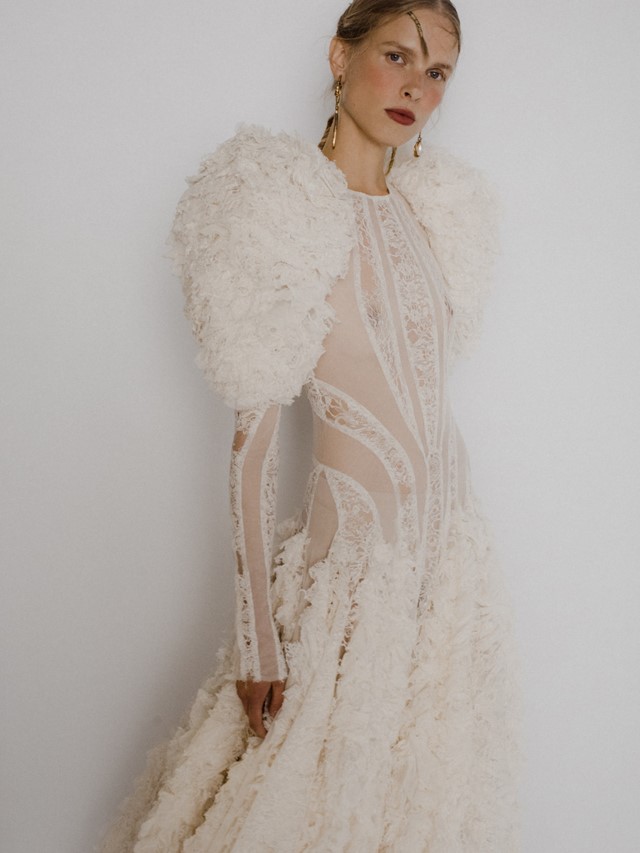
At the end of the show, Burton took her bow alongside her entire design team. The London Contemporary Orchestra – made up predominantly of young musicians, its music composed by Isobel Waller-Bridge, sister of Phoebe – played on. “I love the idea of people having time to make things together,” Burton said. “The time to meet and talk together, the time to reconnect with the world.”
